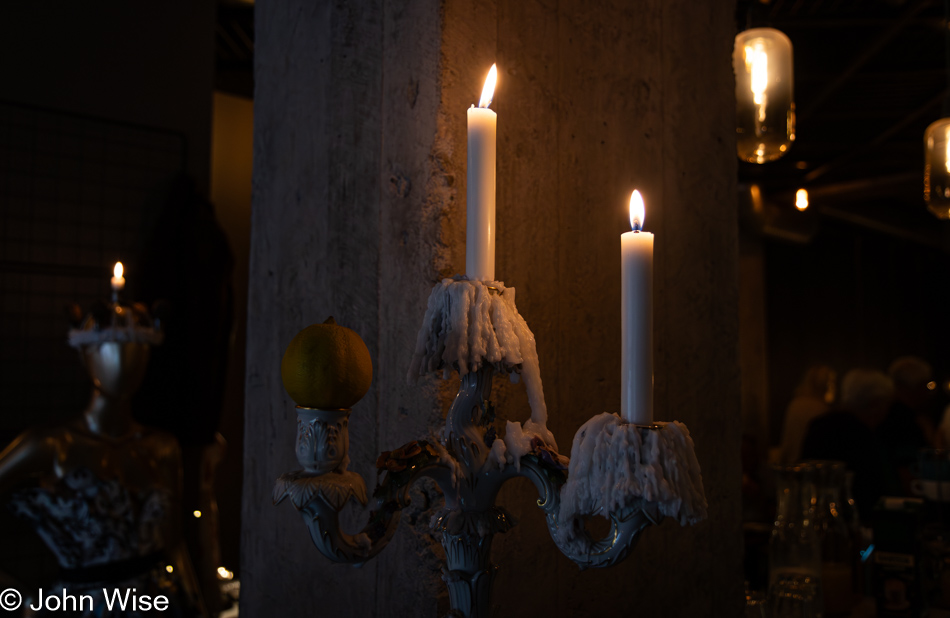
We slept with the window open for the cool sea air, forgetting that at daybreak, the seagulls might start in with their squawking, but that racket was only the final straw that shook us out of bed before our alarm was to wake us at 5:45. Throughout the night, the nearby church rang the appropriate number of gongs to represent the hour. After midnight that wasn’t really a problem anymore, but then on the half-hour, there was a single gong to remind us of where we were on the clock. We were simply too tired to care enough about the disturbance to get up and close the window.
Downstairs, for the breakfast buffet (included with the room), we met Felix, Sven’s son. Sven, the owner of the hotel, had checked us in yesterday. Felix gave us a quick lesson in the differences between the Danish and Swedish economies as he’s worked in Denmark for a time. At our table, we listened to Albin Lee Meldau sing Segla på ett moln to us about sailing on a cloud. We placed our bags in storage so we could check out and take out our bikes for today’s big adventure.

Off we go with our e-bikes toward Kåseberga, about 18 km (10 miles) east of Ystad.
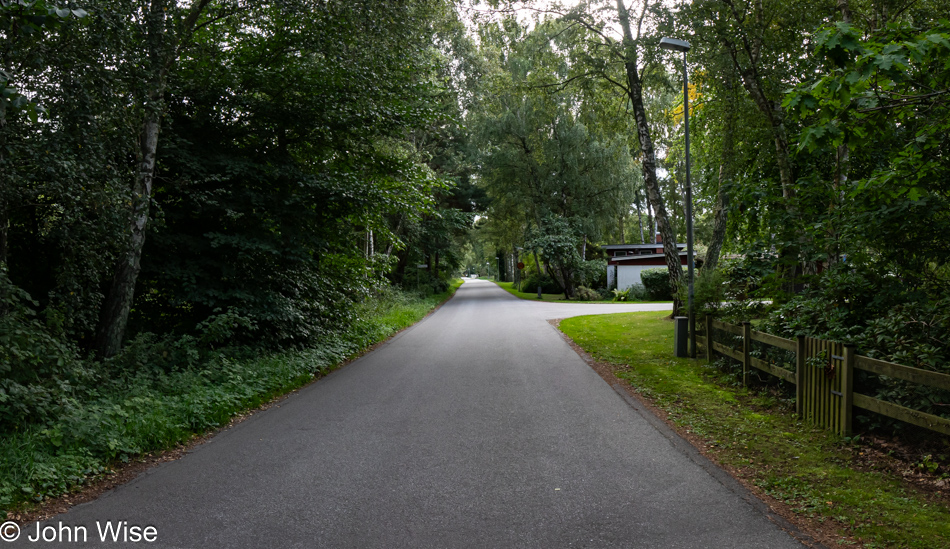
Just as in cars, Caroline is the navigator, which becomes important on this trek as the bike trails and exactly where we are aren’t always evident.

Riding past a field that might have live ammunition seems strange at first, but we’ve driven past at least a couple of places in the United States where that is true as well. Maybe the proximity due to being on a bike next to a simple barbed wire fence instead of driving in a car next to a chainlink fence topped with razor wire made the difference.

Yep, that’s the fence on the right that stands between us and our annihilation from stepping on something that goes boom.
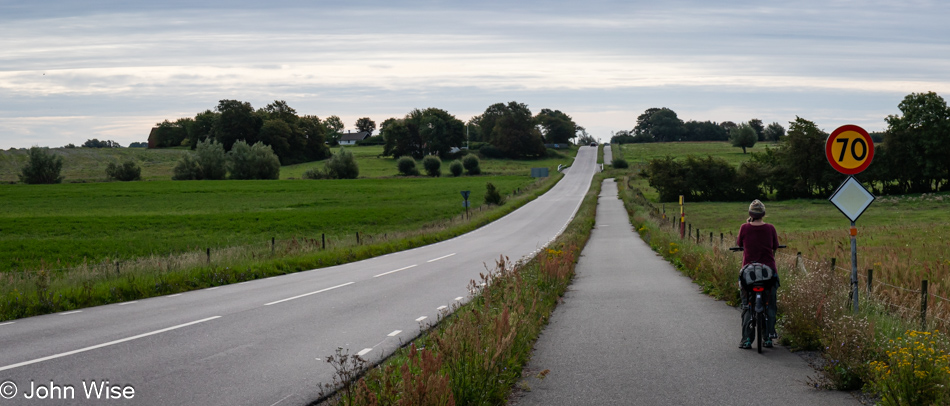
In an early iteration of our travel plans, we were going to jump on a ferry to the island of Gotland, Sweden, and visit the historic village of Visby, which is said to be the best-preserved medieval city in all of Scandinavia. Due to the time of year in which are traveling, train schedules and routes, and not wanting to rent cars, Gotland wasn’t going to work, but in trying to find a way, I discovered the place where we are headed today.

We brought ponchos with us and a waterproof camera bag should we see rain while out on this bike ride, determined we didn’t want to allow the weather to derail our journey over the Swedish countryside. Our wish for blue skies seems to be happening, but we are well aware of how quickly things can change.

While some of our ride has been shared on the open streets, Swedish drivers have been polite and always give us enough space even on narrow roads, so there’s been no real stress getting down the coast aside from the nervousness that travels with us due to previous experiences.

We’ve reached the village of Kåseberga and are nearly at our destination.
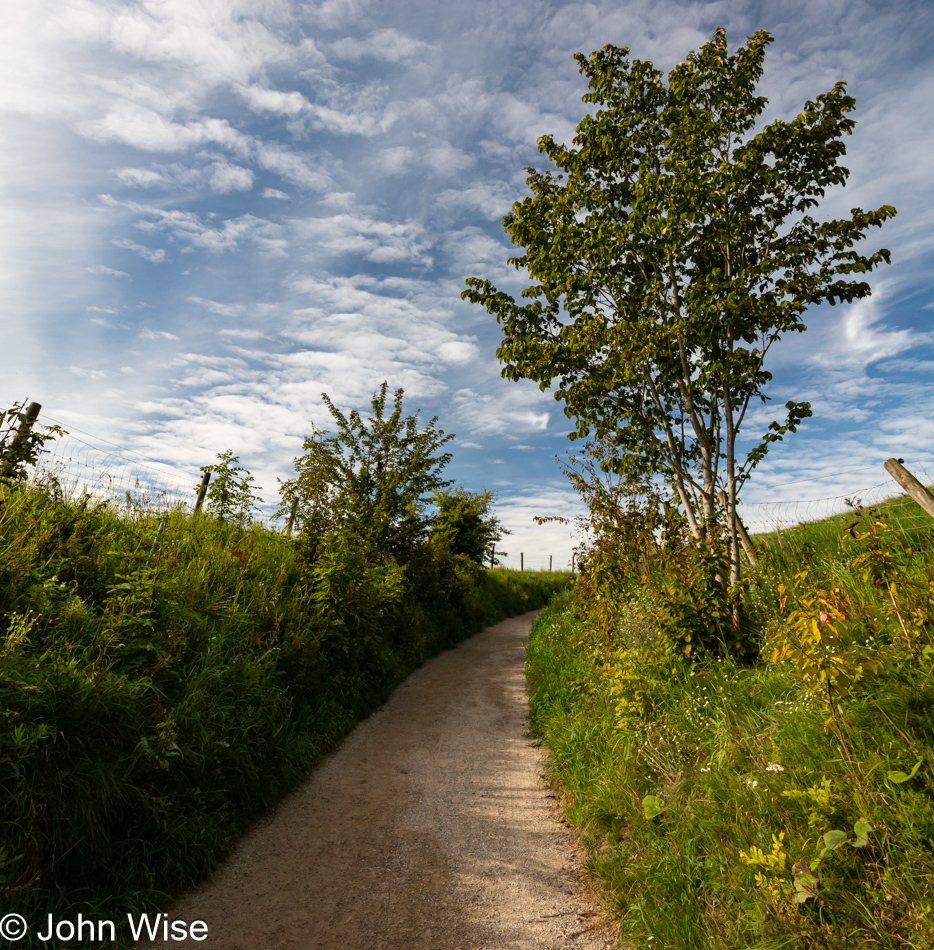
Pushing heavy e-bikes up an unrideable hill is never fun, but the weather on our side makes up for that.
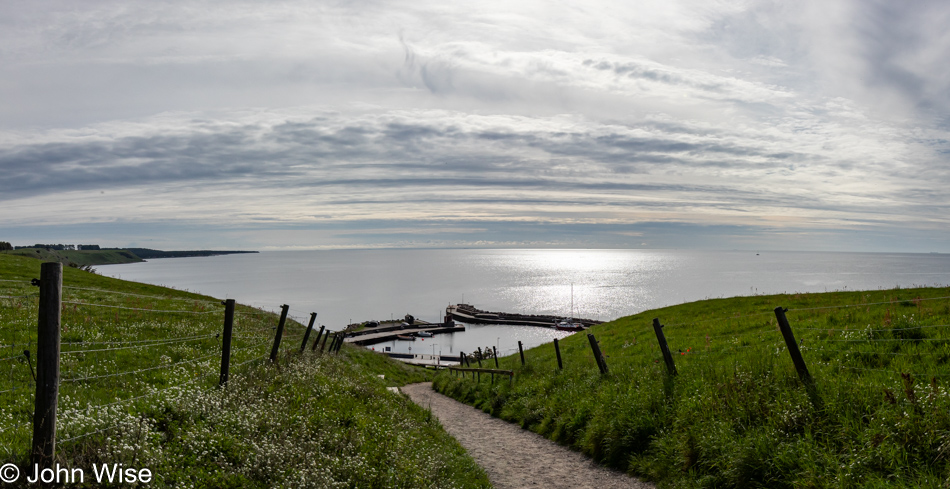
At the top of the hill overlooking the Kåseberga harbor on the Baltic Sea, we left the bikes with Caroline’s backpack to the side. Nothing is locked up or secured; we are trying our best to hear what those around us have been telling us over these early days of our vacation: you can trust things and leave your paranoia behind. I wish it were so simple. Anyway, the rest of our trail must be walked.
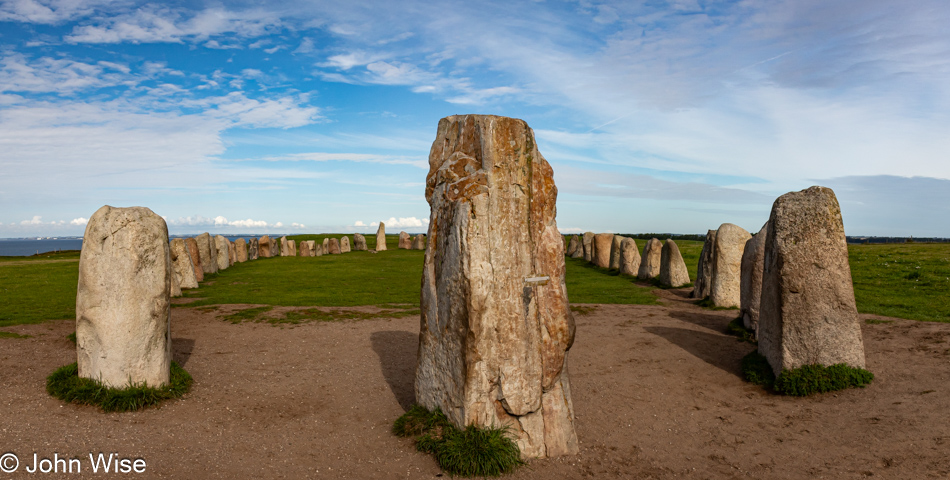
We’ve reached Ales Stenar (Ale’s Stones), which might as well be Stonehenge from our point of view. Prior to my trip planning, I’d never heard of other stone circles, and the one I stumbled upon happens to be the largest one in Sweden. We are in awe.

So much unknown history and so much uncertainty about everything that exists between us and what lies before us. Nobody will ever know a fraction about our planet, its people, our past, or what we might discover tomorrow.
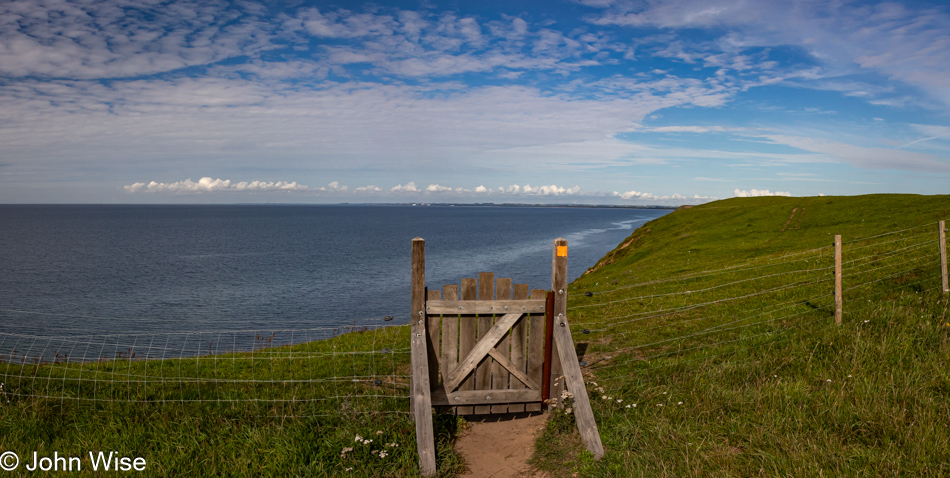
Just beyond the doors and gates of our perception are mysteries that most will never care to explore, and even when we venture into these new domains, the onion skin we peel back is but a molecule of the whole that will leave the majority of knowledge that might be gleaned hiding in the space beyond our senses.

Quick, take a photo to remind yourself that your experiences are real, or nobody will ever believe you that your life has been so rich, loaded with rare experiences, and enchanted by love. To hedge our run of luck, we move around the circle clockwise and counterclockwise, touching each stone as we go while also knowing it can’t hurt anything, even if it ultimately contributes nothing.

What a peculiar thing this existence is; we flash into life like a glimmering sparkle capturing sunlight before the cloud of death, and the setting sun of life obscures even the idea that we were once here. As we linger here trying to pick up something intangible as though the voice of history or our ancestors will reach out, we’ll never be able to spend enough time here at Ales Stenar that the images and experiences are burned deep enough into our memories.
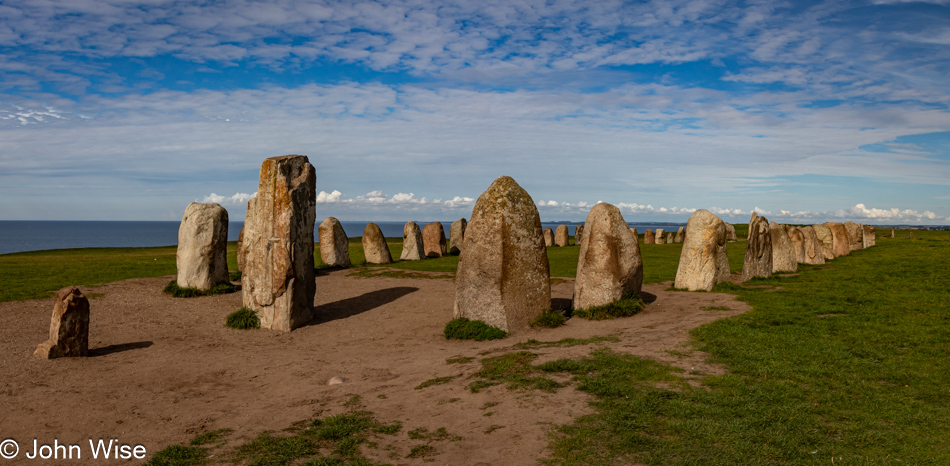
These 59 stones are laid out in the outline of a ship which has some archeologists suggesting this could be a monument for lives lost at sea. This type of circle, also called “stone ship,” is not uncommon in Sweden, Denmark, and other Baltic locations. Traditionally, stone circles have been found over burial sites, and urns of remains have been found here below the surface, so this could be a final resting place. Then there’s the fact that the sun sets over the northwest tip of the stone circle at midsummer and rises at the opposite tip during midwinter, so it possibly served calendaric functions. The age of the monument is also in question, with some saying it has been in use for about 5,500 years while others suggest it first came into existence around 1,500 years ago; nobody really knows.
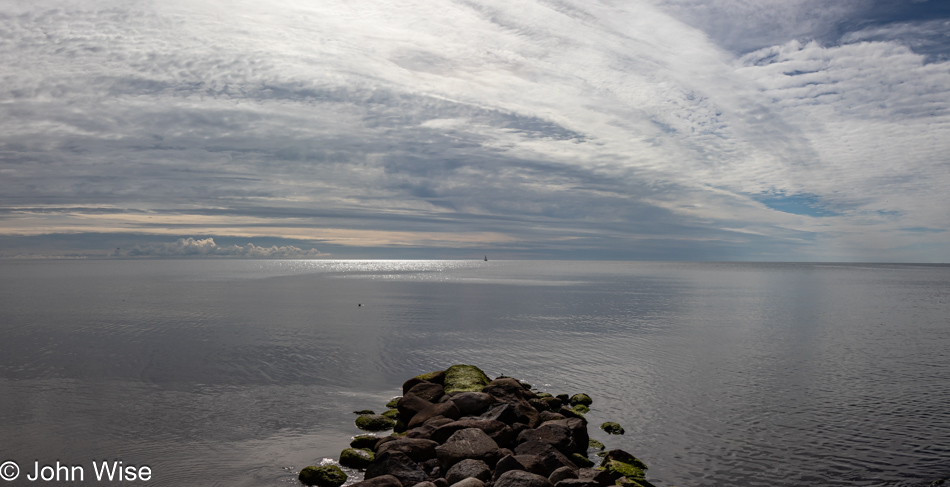
Mysteries, how are they necessary in order for our mind to compel our curiosity in a forward motion? What might life be like if everything was spelled out and our questions were easily answered? I don’t believe we’d be the same species as we are at this time. By nature, humans, or those who actually desire to explore their humanity, will find themselves on a trajectory of uncertainty where the enigma and ambiguity of what they don’t know hold intrigue instead of fear and apprehension. For me, the connection across space and time and the knowledge that has traveled through this part of our universe never fails to amaze me while the antics of those wasting time and thought on inanities to the exclusion of self-discovery exist in an endless pit of despair. Their shenanigans risk my ability to focus on the potentialities I feel that I live for.

Our next stop has an address in Löderup, though we don’t need to be in the town proper, nor should we head in the direction of Löderups Strandbad, which is a campground, so not left or right turn for us: we need to go north following bike path number 3 with the red sign that directs us to go straight ahead.

The name of the road is Peppingevägen, which Google wants to translate to Peppin Route, so what’s a Peppin? The confused answers from Bing would like me to travel down the weird rabbit hole, claiming it has something to do with Pippi Longstocking or King Pepin the Short, who preceded Charlemagne. While I kind of liked the second search result, this all felt wrong, so I asked Claude 2 for their thoughts. I was told that “Peppin” refers to a small farmstead in an isolated rural area, which sounds about right. I can already hear Caroline, “I thought you already knew that?”
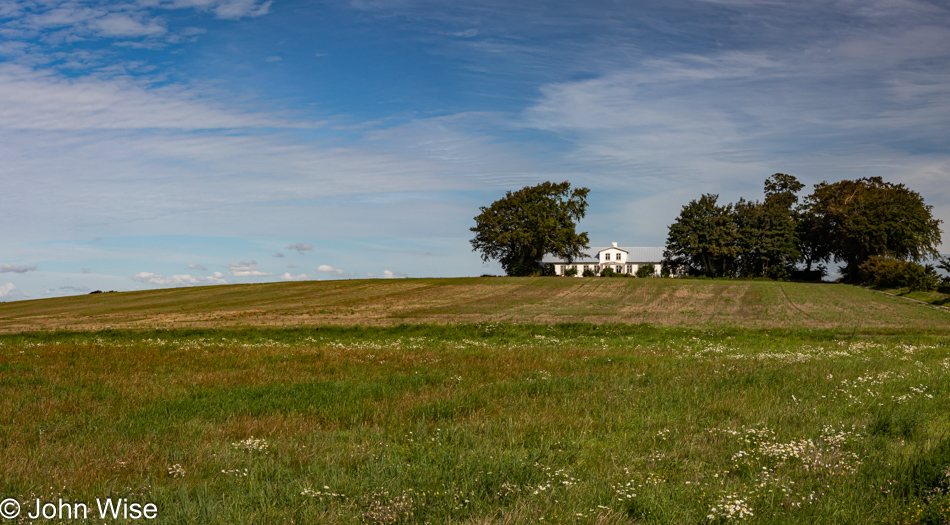
No thoughts about the House on the Hill or the Texas Chainsaw Massacre, though I could believe that this could be the next setting for Human Centipede. I’ve just been informed that Tom Six has apparently said that there will be no part 4 but that he would consider making a movie called The Human Caterpillar.
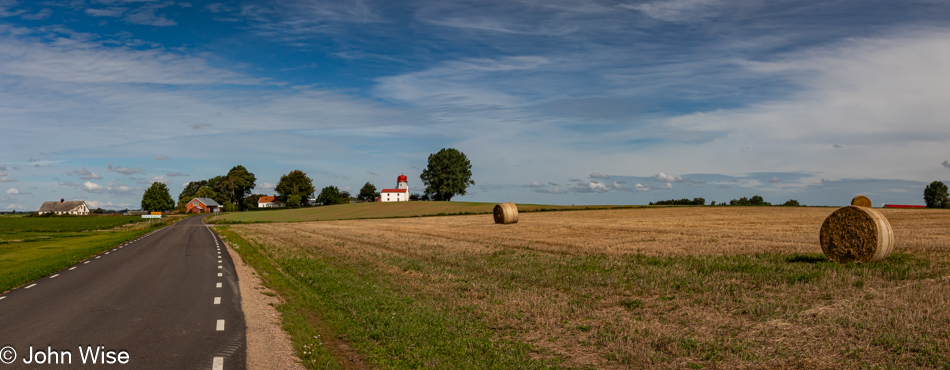
Small farms in a rural setting – it seems the road has been appropriately named.
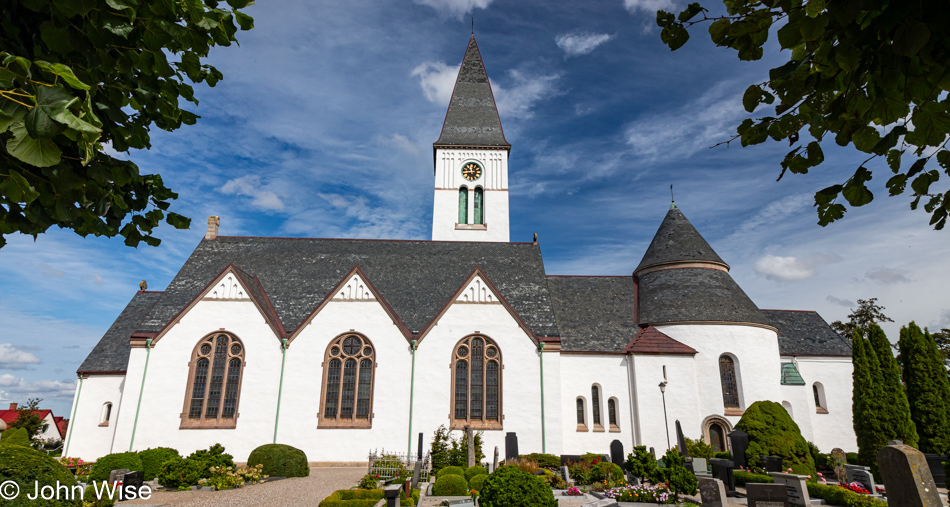
Valleberga Church in Valleberga is not in Löderup as I first thought, though it is nearby. As we rode up, Caroline had been reading up on the church and saw mention of a runestone here at the church. We ran into a groundskeeper after scouring the cemetery for the Viking-age relic, but she’d never seen or heard about one here.
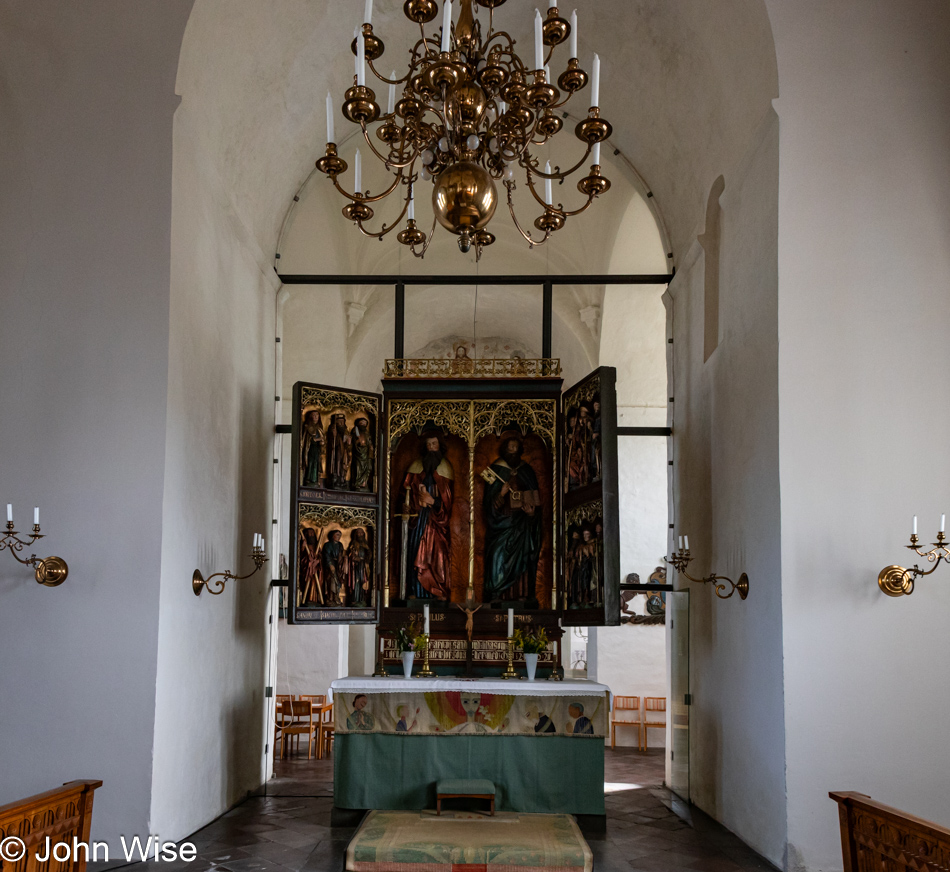
What an undertaking it must have been to build a church in a rural area such as Valleberga, as very little at the time would have compared in scale to such an endeavor for a relatively small community. This particular church was built in the mid-1100s with labor that must have been comparatively equivalent to building pyramids or giant malls, albeit at a different scale. I can’t say I’ve ever seen a 900-year-old farmhouse or barn, but these heavy old churches survive the elements and passage of time, affording us windows into the past.
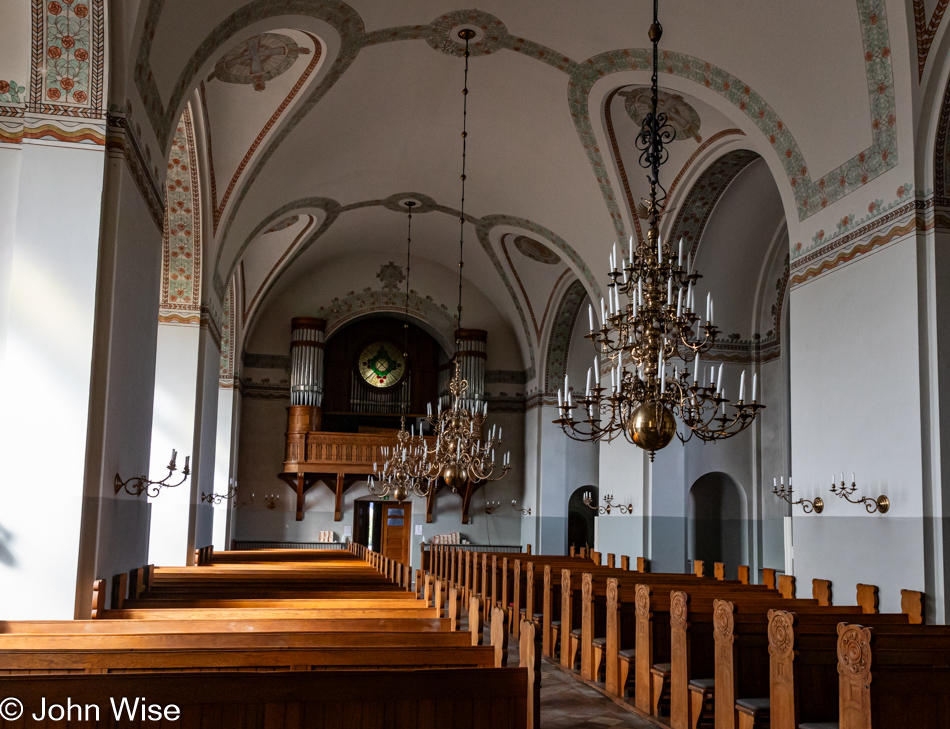
Cavernous spaces built before the arrival of electricity meant that natural light was required to play a role in illuminating the interior, and as it’s not all that often we are able to visit places that had to be constructed with that in mind, the appeal of the quality of lighting remains a huge draw in what attracts me to churches.
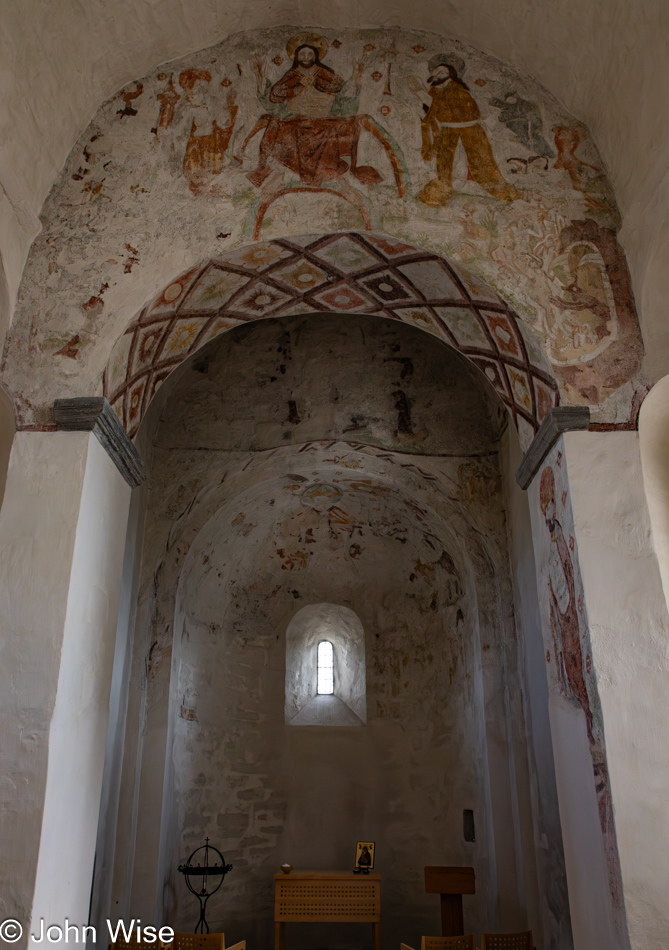
These frescoes are now over 600 years old, having been painted in the 1400s.
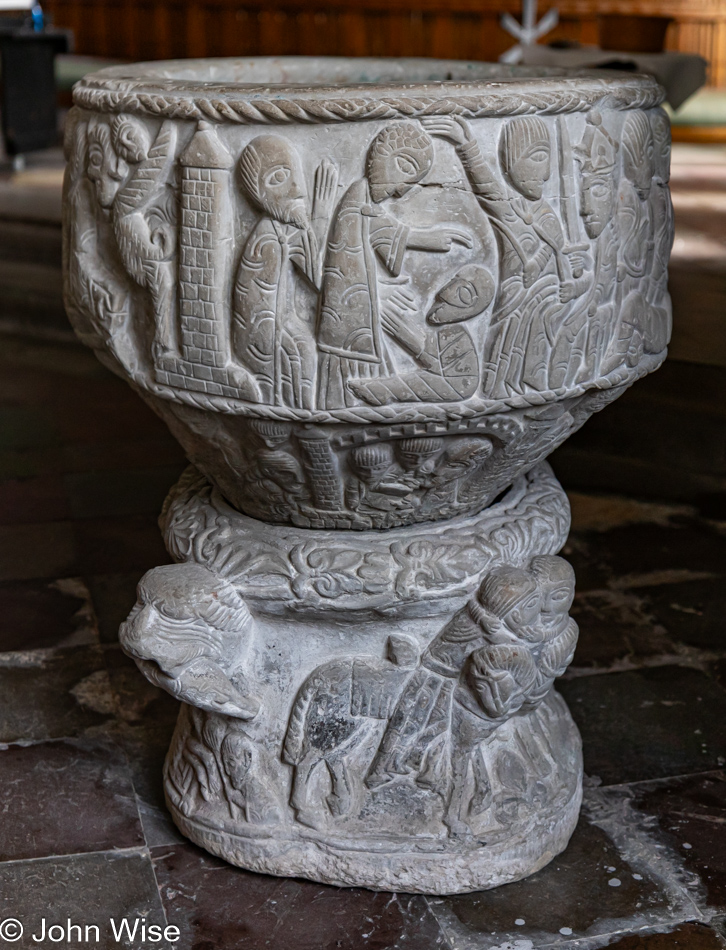
From Wikipedia: The baptismal font dates from the 1160s and was sculpted by the Master of Tryde, also called Majestatis. It depicts scenes from a legend about the apostles Peter and Paul. I wish more was known about this Romanesque anonymous master sculptor but at least there’s a list of churches where his work has shown up should we ever again have the opportunity to see other pieces from him.

An old part of the church and the only remaining round church still standing in southern Sweden. In 1343, the round church was rebuilt to conform to the traditional cruciform shape we are more familiar with at this time.

Separate from the church was a large tower Caroline thought might have held bells at one time. I was certain the door would be locked, but I couldn’t really be sure unless I checked, and wouldn’t you know it, the door was open. With some reluctance, Caroline joined me, which was made easier when I announced that the “half-finished” runestone was in there.

Swivel Stones (Svickelsten) were stones used between a straight wall and a round arch structure. These two are found near the runestone. What we couldn’t have known at the time was that two of the gravestones on the floor were carved by the Master of Tryde, who also created the baptismal font pictured above.

This is not a bell tower as Caroline had thought; it is called the Castle and is believed to have been part of a defensive wall at one time. In the not-too-distant past, the village wanted it and the church torn down to make way for a modern building, but the authorities in Stockholm shot down that idea, and now we can all be happy that this corner of history still exists.

But wait, there’s more, as we are not done with this bike ride yet.

For one reason or another, we didn’t stop in at this church, which is a shame because built into one of the cemetery walls is a runestone. This is the Glemminge Church inaugurated in the summer of 1900 after it was built on the site where an 11th-century Romanesque church stood. One possible reason for omitting it was that it wasn’t on my itinerary and as much as we’d enjoy unlimited time to do what we’d like on a spontaneous basis, we have other things to see and places to be. After getting home and while writing this post, we tried to identify this church but were having problems as we couldn’t find an exact match. Well, it turns out that the church suffered some damage, and in repairing the roof, a steeple was removed.
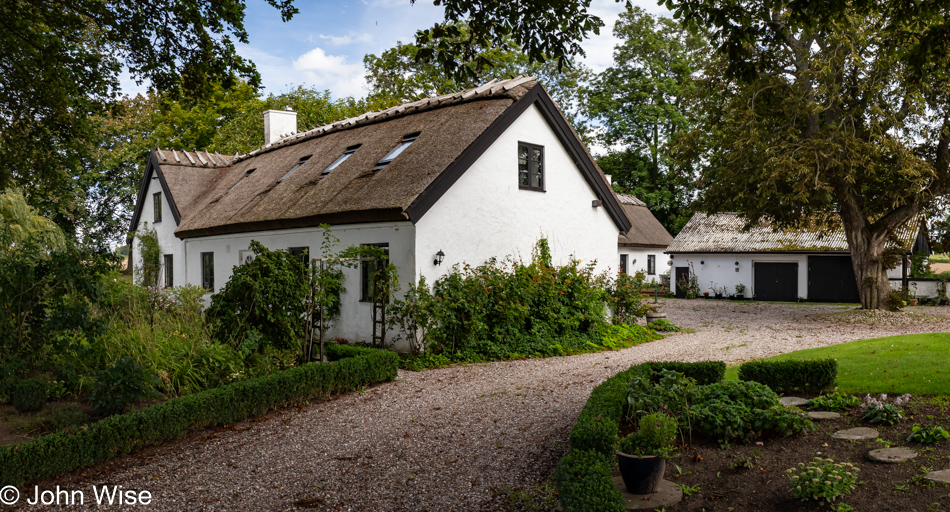
What a beautiful little oasis among the farms with this thatch-roofed cottage under the chestnut trees. One strange element was the sign to my right of the photo that warns that the property is under video surveillance.
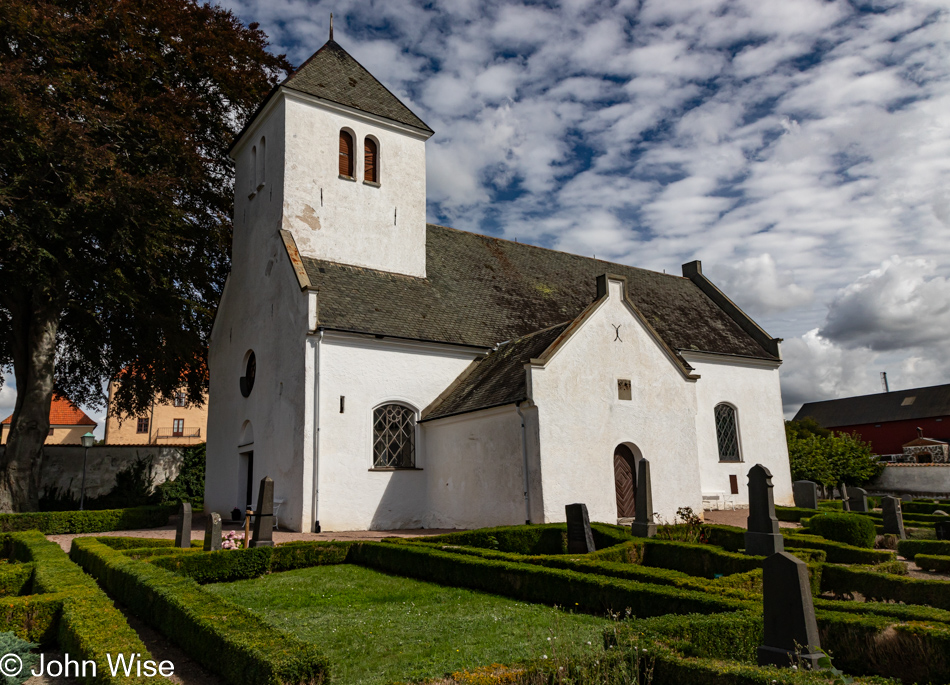
We almost didn’t make it to the Tosterup Church in Tomelilla as road construction looked like we’d have had to take a fairly big detour to make it up the hill, but the guys working the site allowed us to walk our bikes through the area. Once up here, we found the church locked up and the castle next door requiring a group of 10 or more to arrange a guided tour in order to visit.
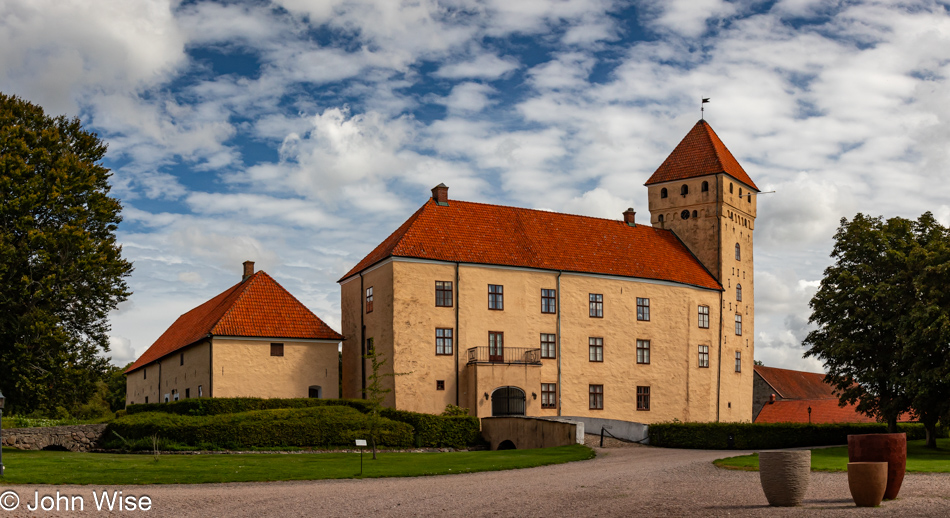
The Tosterup Castle is one of the locations that the astronomer Tycho Brahe grew up in and that we’ll likely never see for ourselves other than this shot from the gate.
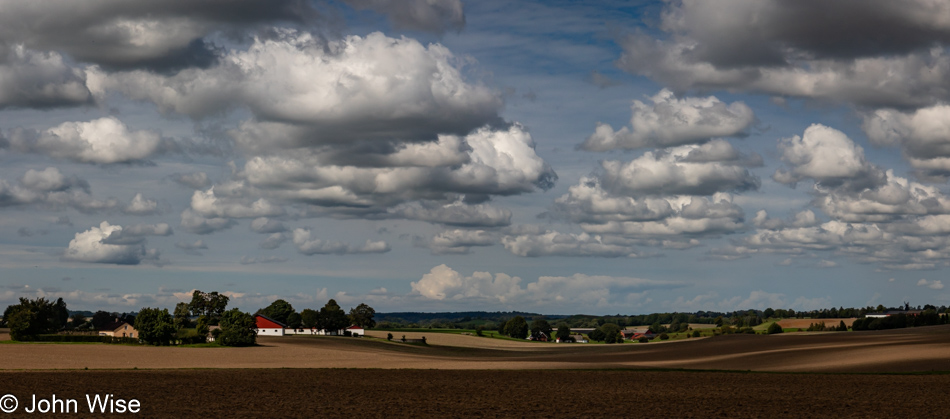
Off in the distance on the far right is a rather large windmill, though it’s nearly invisible in this photo due to the size in which I have to present it, it’s there, I can assure you. As a matter of fact, I think you should just make it a goal to see all of this for yourself because while we will have seen amazing sights on this ride, we had to skip seeing Bjärsjöholm Castle and the Borrie Church in order to take in the next destination that we only learned about yesterday afternoon.
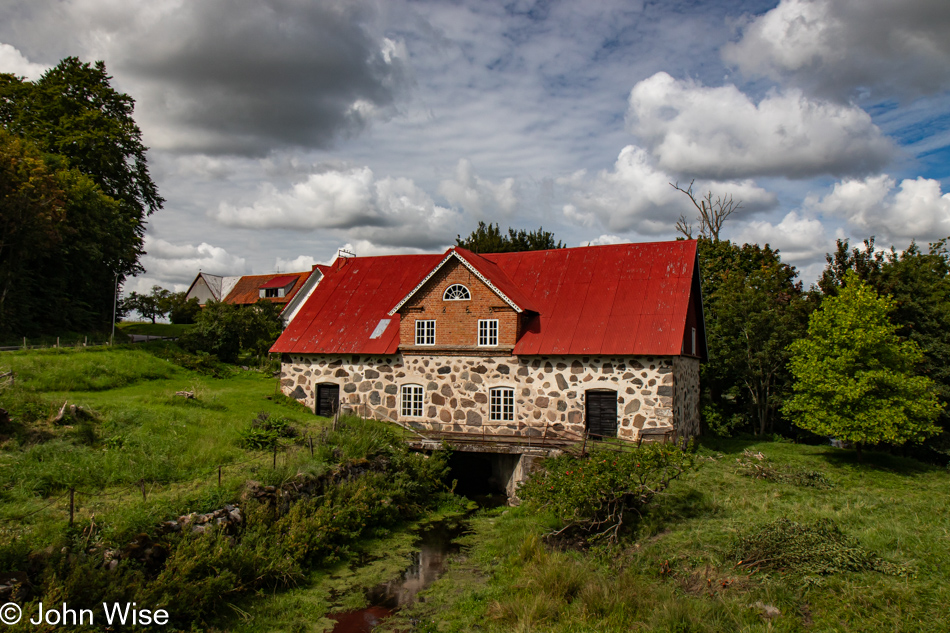
Nope, not yet; this old mill house in Svenstorp was not our next destination it was just a place on the side of the road.
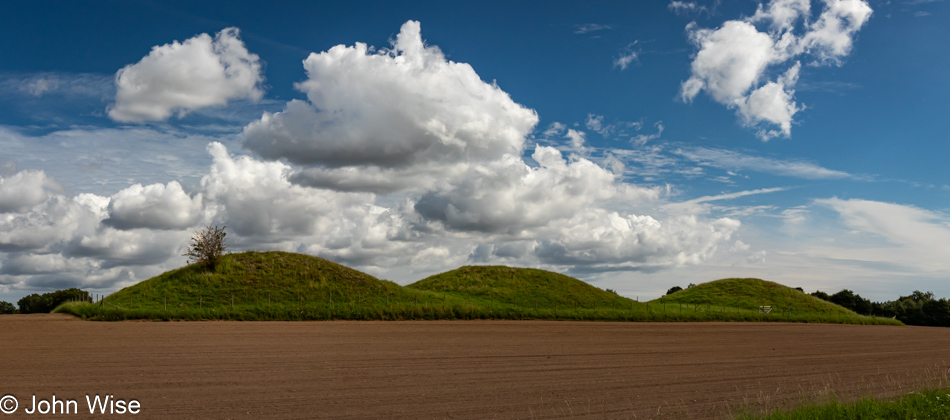
While at the Gråbrödraklostret (Greyfriars Abbey) and St. Peter’s Church yesterday, there was a photograph in one of the exhibitions that piqued my interest, and the woman at the register offered us a general idea of where the “objects” are located. The funny thing was, we had just ridden past the intersection of Svenstorpvägen and Fårarpsvägen and were discussing the idea of giving up on our search as it felt like we were on a wild goose chase. Alright then, it’s decided, let’s get on down the road and head back to Ystad so we can catch our train, and it was just then, on returning to the intersection to turn right, that we spotted the hills right in front of us. These burial mounds are on Fårarpsvägen, just north of Köpingebro, and I could not find a single word online about their existence.
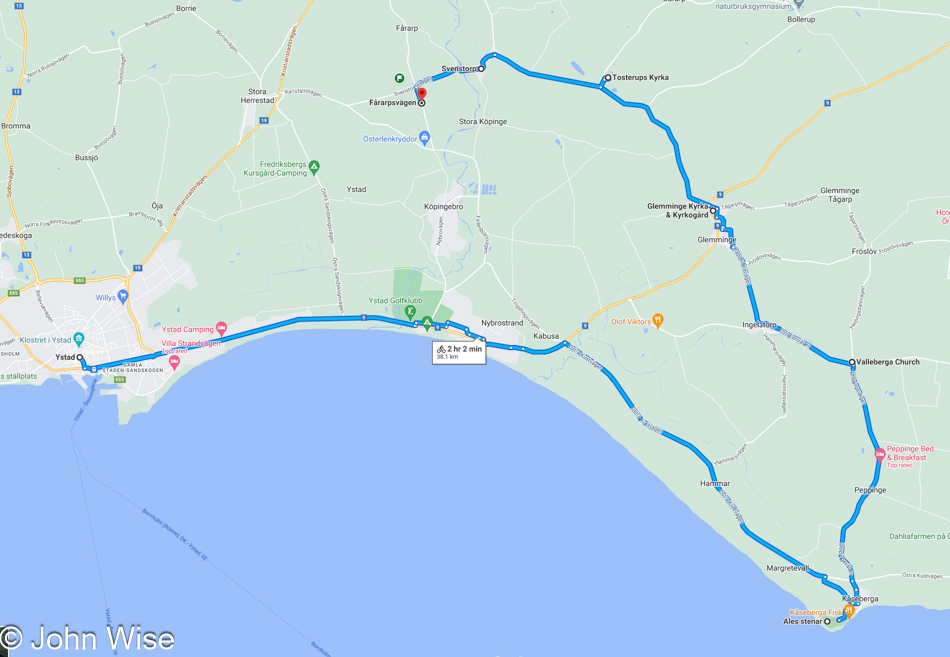
You see things correctly in this map of our bike path; we did not peddle back to Ystad. On the road across the street from the burial mounds, Caroline’s bike started to behave strangely while making odd sounds – it was because her rear tire was nearly flat. Though she tried pedaling through it, we required a rescue out in the middle of nowhere. We were on Boställesvägen near an old sugarbeet factory, but from the bike trail that wasn’t easy to figure out. It took a minute to convey exactly where we were in a meaningful way to offer instructions to Erik so he could fetch us, but fetch he did, and we ended up having a great conversation with him about his co-ownership of a bar in the States and his visits to the U.S.
Saved, we were soon back in town, collecting our bags and boarding a train to our next destination, Lund, Sweden.
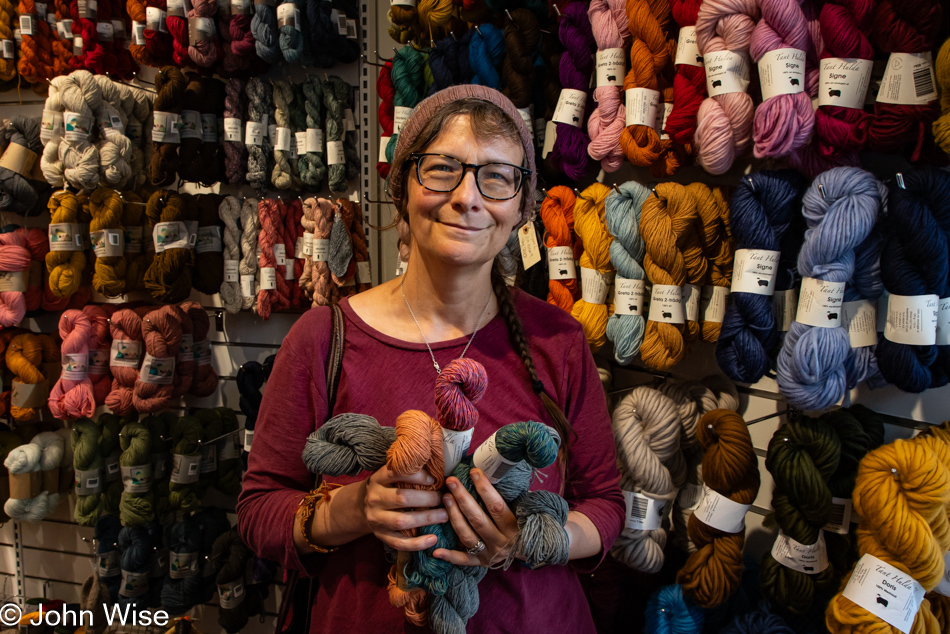
Of course, our first stop would be in Lund’s sole yarn store, Aunt Hulda’s. Caroline is only holding this yarn for dramatic effect as there’s only so much we can afford and carry with us; this didn’t really come home with us. Right, Caroline would rather buy a new suitcase or hit up the local shipping agency to send yarns back to the States than miss the opportunity to take home the hues soft feels of yarn that yank at her heartstrings. Yarn has a kind of hypnotizing effect on this woman, like a reverse Medusa thing that compels her to collect as many skeins as her hands can transfer to the counter and leave with the satisfaction that life is good and at least she’s not been frozen into stone.
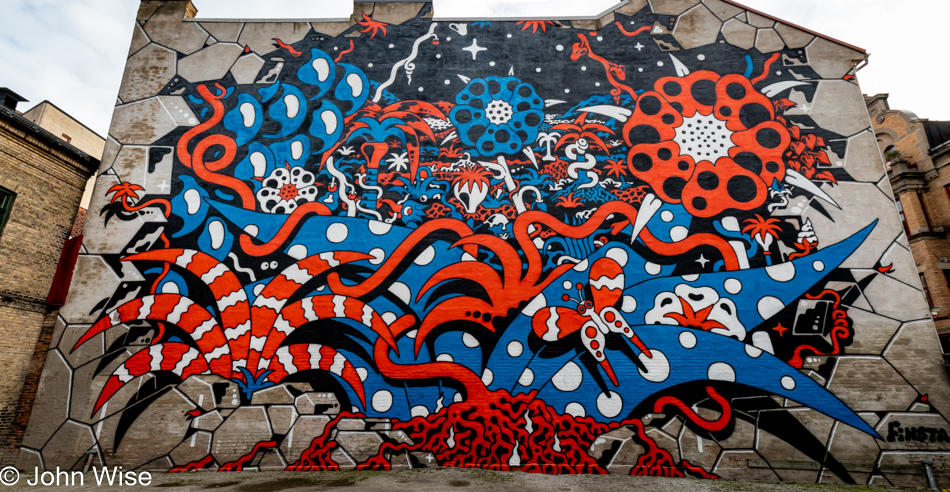
As for me, I’m a prisoner of collecting the photos and stories that will travel home with us, such as this mural from Lund-born artist Finsta.

We checked into our hotel, and upon walking out, we passed a house with a sign that caught my attention: August Strindberg lived here in 1897 when writing Inferno. Wow, on the adjacent corner, just by chance! I’m staying next to the house where Strindberg wrote this book I was in love with back in 1986 after I first encountered it. This is a wicked coincidence that leaves the hair on my arms standing up as if I were a Beatles fan visiting the crosswalk at Abbey Road. I’m in awe that this author and playwright has walked these very streets I’m about to explore this afternoon and tomorrow morning.
While I was searching for something about Ystad yesterday, I came across this quote from Inferno referencing their small village, “The little town to which I now betook myself lies in the extreme south of Sweden, on the seacoast. It is an old pirates’ and smugglers’ haunt, in which exotic traces of all parts of the world have been left by various voyagers.” I had no recollection of this reference but was excited to know a circle was closing in some way.
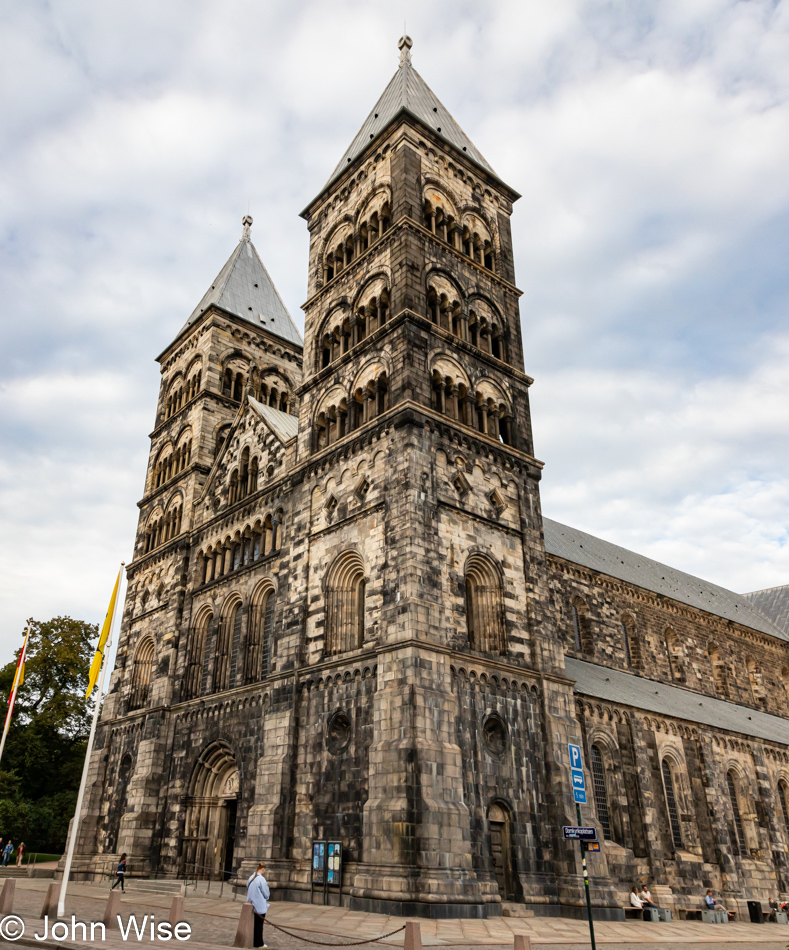
Lund Cathedral appears to date to the latter half of the 11th century, but exact dates are sketchy. What isn’t ambiguous is that in a late 19th-century renovation, the architect responsible for updates tore down the entire western end of the cathedral and replaced it with a new entry and towers of his own design, pictured here. When the church was first taking shape, this part of Sweden belonged to Denmark.
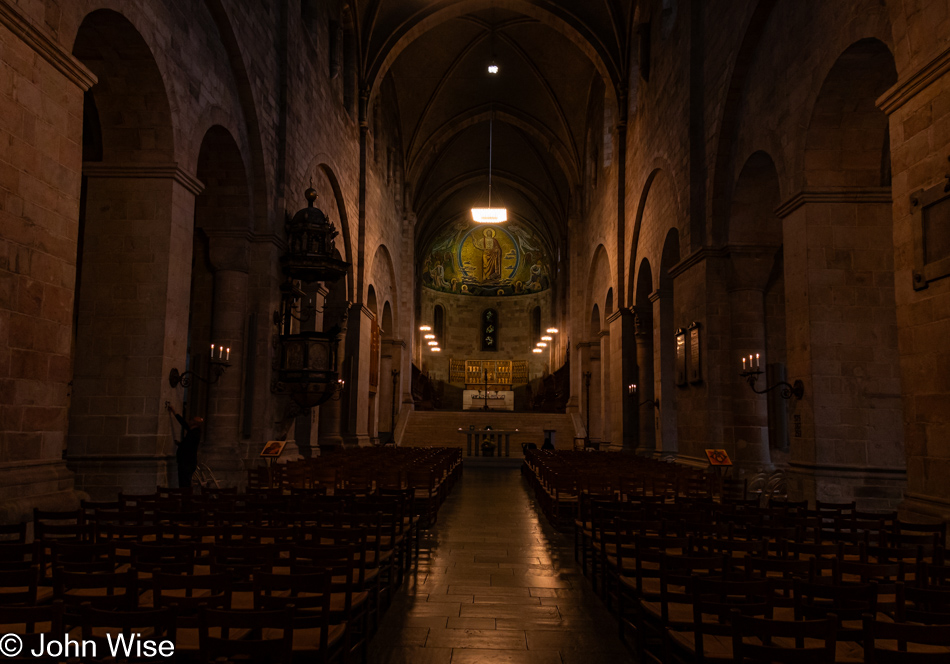
There’s a lengthy article on Wikipedia about the nearly 1,000 years of history of this old church. With simply too much information for me to try encapsulating here, it’s certainly worth a read.
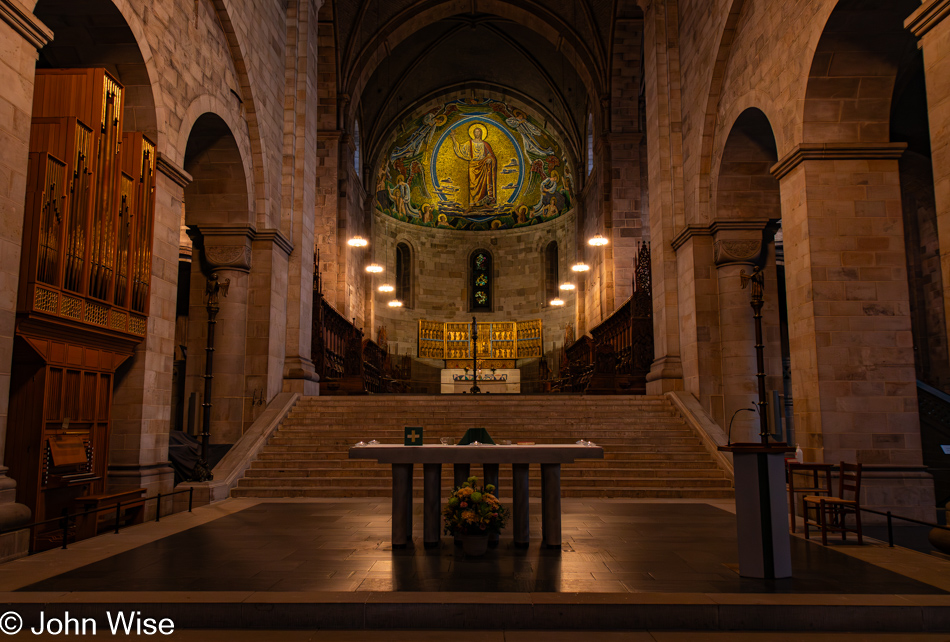
The altar right in front of the photo was consecrated in 1145, while the altarpiece in the background was donated in 1398. The 78 choir stalls in between date from 1361 and 1379. On the left is one of the six organs found in the Lund Cathedral,
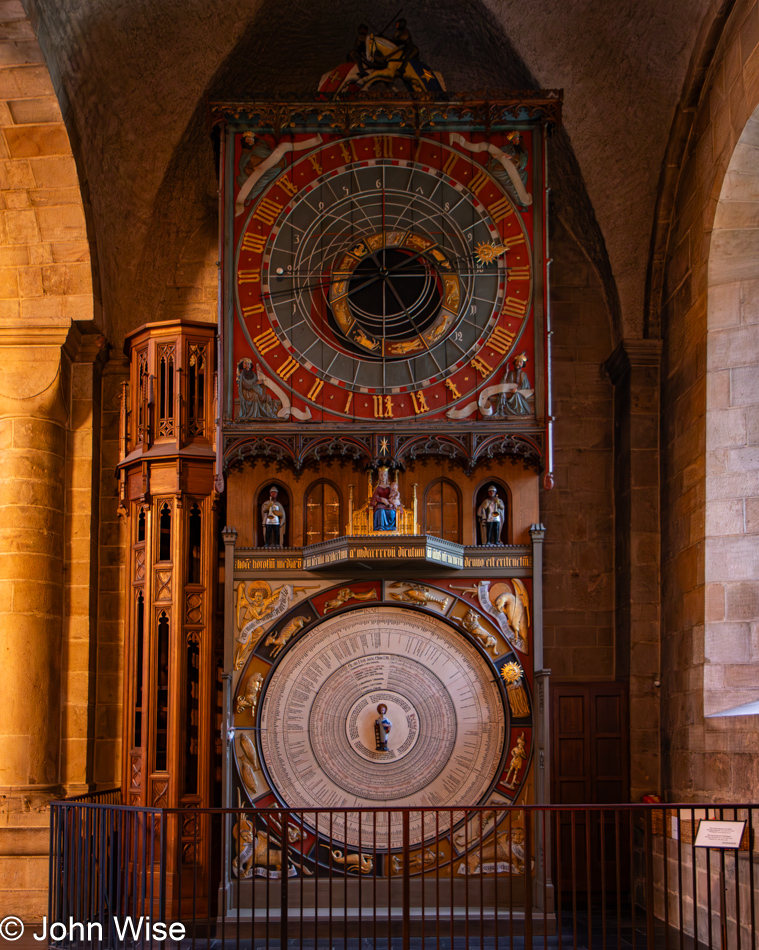
We arrived at the cathedral in the minutes before it was closing; just seconds after I took this photo the lights on it were turned off. Hopefully, tomorrow, we’ll be able to find time for another visit, especially to watch one of the two daily performances where the two knights at the top of this astronomical clock clash. The clock was made back in 1425 and features the smallest of the six organs in the cathedral that plays In Dulci Jubilo, thought to be by German mystic Heinrich Seuse.
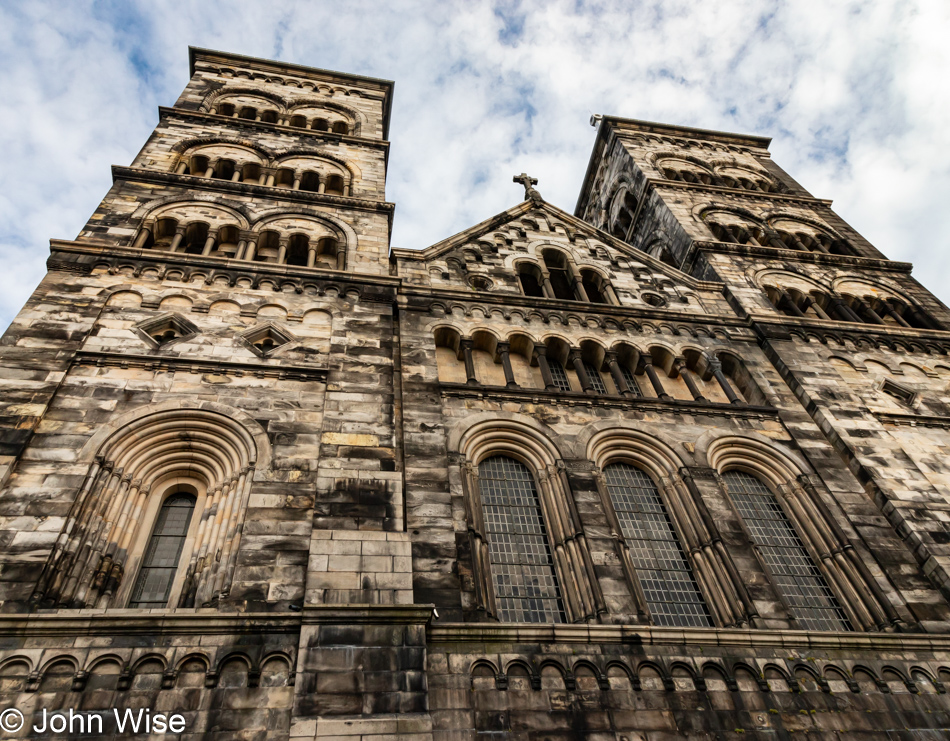
On occasion, I love the magnificence of architecture.
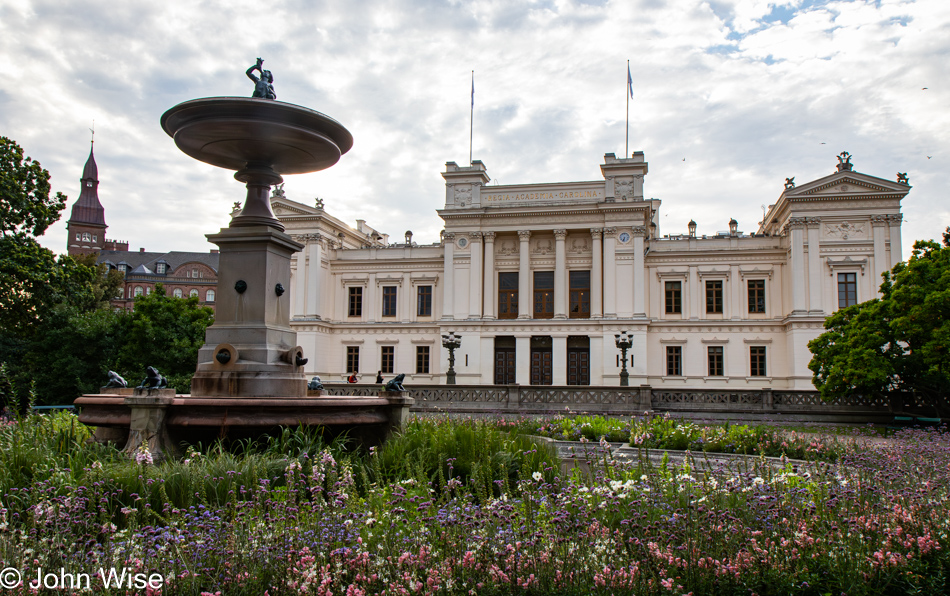
We are at a tiny corner of one of the most prestigious and largest universities in Northern Europe, Lund University. It also happens to be where Jaap Haartsen studied; he’s the person who gave the world Bluetooth technology, naming it after Viking King Harald Bluetooth, though I’ve already shared part of this info in a previous post.

Lund was ordered to be established in 990 by King Sweyn Forkbeard of Denmark (son of Harald Bluetooth), remaining a Danish city until 1658 when treaties ended the Danish-Swedish wars. My main interest in sharing this point in history was nothing more than my keen appreciation of the name Forkbeard.
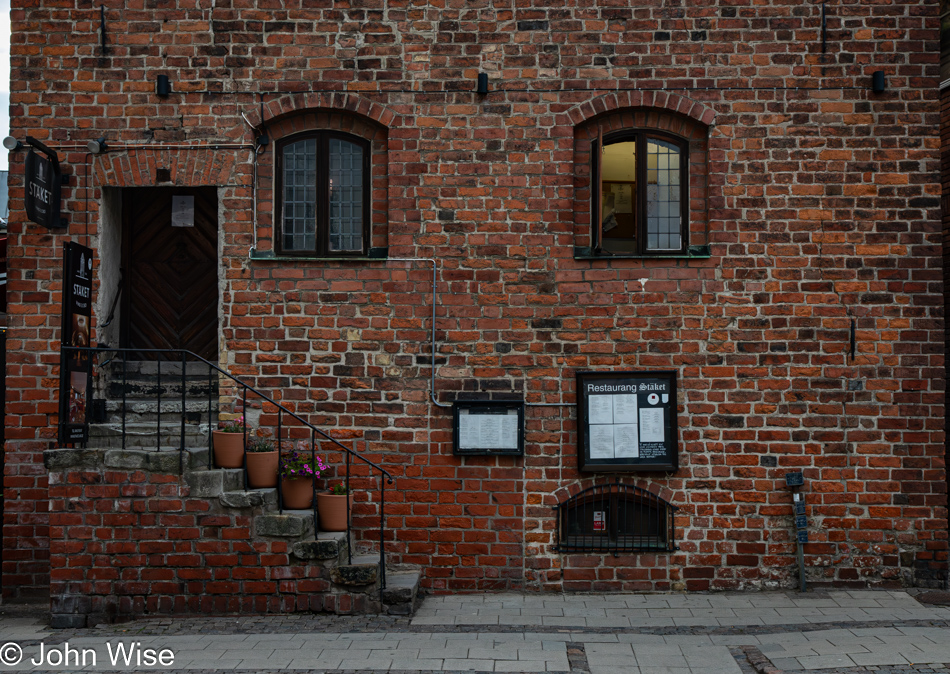
I seem to also have a keen appreciation for red brick buildings.

Accentuating an environment with artifacts of a different age adds charm to a place instead of always surrounding ourselves with images of modernity that scream consume at us.

Replacing painted indicators of what traffic is allowed by installing stones that signify that this is bicycle territory makes a solid statement and is much appreciated. I’m impressed that so many cities in Europe are making consideration for how pedestrian zones improve the quality of life for those who live in these historic districts.

The restaurant we are having dinner at, called M.E.A.T., is also on a pedestrian street, meaning that as we eat with the windows of the place open, we are not listening to cars driving by, nor are we listening to TVs.

Approaching our hotel, we decide it’s too early to head to our room, so we veer to the left for a walk over to a nearby park.
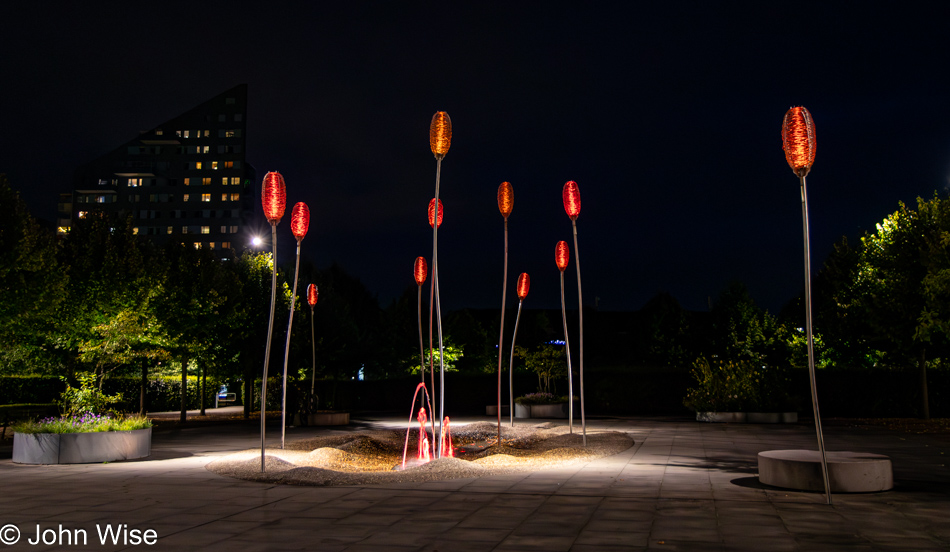
We are in the Stadsparken. Prior to the city walls being removed the area was a pasture within those walls. In 1911, the park was inaugurated, and now, here before 10:00 p.m., we are walking through with some minor trepidation: while some areas are well-lit, others are a bit dark. Our conditioning from America suggests that danger could be lurking in the shadows.
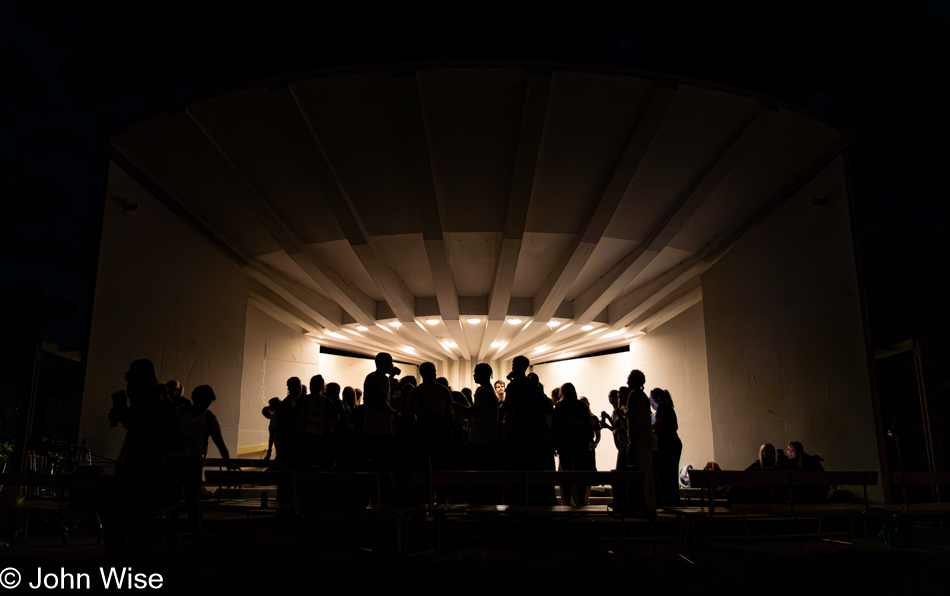
Two things happened on the way back to our hotel. First, Caroline noticed a young woman, maybe even a girl, walking by herself wearing over-the-ear headphones, seemingly without a care. We’d seen other women doing the same with full over-the-ear headphones (not just earbuds), walking through cities apparently oblivious and without concern about who might be around them. This is NOT a freedom girls and women have in the United States.
Second, we were drawn by the sounds of a party or nightclub coming from somewhere in the middle of the park. It’s after 10:00 p.m. on a Wednesday night, and we are curious. Following the sound, we come to a pavilion where about 40 young adults are singing and jumping up and down to an amplifier blaring the sound of a Macklemore song that is exciting the night with, “So, we put our hands up like the ceiling can’t hold us.” The sense of this being a wholesome gathering cannot be overstated. Caroline and I stood there for that song and the better part of another, wondering why this doesn’t exist in the “Most free country on earth”? Obviously, we in the U.S. are not the happiest because what we are witnessing here in Lund is evidence of a society not existing in fear.